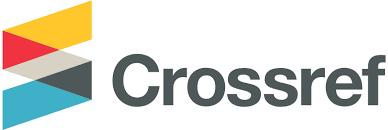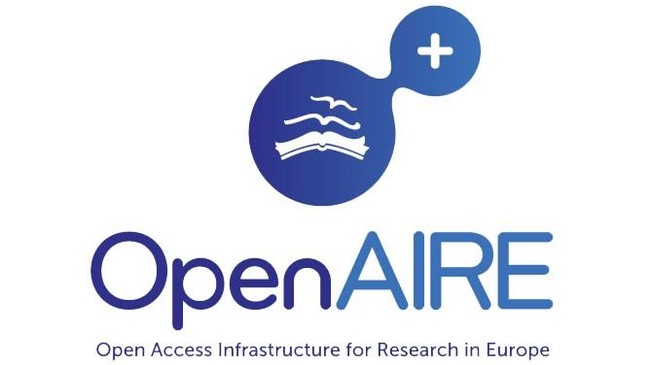ANALISIS CLUSTER BAHAN HERBAL BERDASARKAN FITUR RESPON E-NOSE
DOI:
https://doi.org/10.21009/03.SNF2020.01.FA.22Abstract
Abstrak
Electronic nose (e-nose) merupakan alat yang tersusun atas berbagai sensor kimia elektronik dengan sensitivitas parsial dan sistem pengenalan pola yang tepat serta mampu mengenali bau yang sederhana maupun kompleks. Dalam perkembangannya, e-nose berfungsi menggantikan keterbatasan hidung manusia dalam mengenali aroma terentu secara cepat dan tepat. Namun, e-nose yang terdiri dari sejumlah larik sensor menghasilkan data yang sangat besar sehingga membutuhkan metode ekstraksi fitur yang tepat dalam mengenali pola dari respons e-nose. Data respon e-nose terhadap lima bahan herbal yang terdiri dari jahe (ZO), kencur (KG), kunyit (CL), lengkuas (LG), dan temulawak (CX) telah dianalisis dalam penelitian ini. Dua metode ekstraksi fitur, yaitu relative amplitude (RA) dan surface (S) digunakan untuk mendapatkan fitur terbaik untuk clustering data respon e-nose kelima bahan herbal tersebut. Pada proses analisis data, metode cluster analysis yaitu k-means clustering digunakan untuk clustering dataset respons yang diekstraksi menggunakan metode RA, dan S. Dua kriteria eksternal validasi cluster yaitu entropy dan purity digunakan dalam mengukur kualitas cluster yang dihasilkan. Nilai entrophy minimum pada penelitian ini adalah 0,53 diperoleh pada fitur RA dan purity maksimum adalah 0,83 yang diperoleh pada fitur RA. Dari hasil tersebut, fitur yang lebih efektif dalam menghasilkan solusi cluster terbaik untuk membedakan kelima bahan herbal adalah fitur RA.
Kata-kata kunci: electronic nose, bahan herbal, ekstraksi fitur, cluster analysis.
Abstract
Electronic nose (e-nose) is a device composed of various electronic chemical sensors with partial sensitivity and a precise pattern recognition system capable of recognizing simple and complex odors. In its development, the e-nose serves to replace the limitations of the human nose in recognizing certain aromas quickly and precisely. However, the e-nose which consists of a number of sensor arrays produces very large data, so it requires the right feature extraction method in recognizing the pattern of the e-nose response. E-nose response data to five herbal ingredients consisting of Zingiber officinale (ZO), Kaempferia galanga (KG), Curcuma longa (CL), Languas galanga (LG), and Curcuma xanthorrizha roxb (CX) were analyzed in this study. Two feature extraction methods, namely relative amplitude (RA) and surface (S), were used to obtain the best features for clustering the e-nose response data of the five herbal ingredients. In the data analysis process, the cluster analysis method, namely k-means clustering, was used for clustering the response dataset which was extracted using the RA and S methods. Two external criteria for cluster validation, namely entropy and purity, were used to measure the quality of the resulting clusters. The minimum entrophy value in this study was 0.53 obtained for the RA feature and the maximum purity was 0.83 obtained for the RA feature. From these results, the feature that is more effective in producing the best cluster solution to differentiate the five herbal ingredients is the RA feature.
Keywords: electronic nose, herbal ingredients, feature extraction, cluster analysis.
References
[2] C. M. Buré dan N. M. Sellier, “analysis of the essential oil of indonesian patchouli (pogostemon cabin benth.) using GC/MS (EI/CI),” J. Essent. Oil Res, vol. 16, no. 1, pp. 17-19, 2004.
[3] L. Capelli, S. Sironi dan R. Del Rosso, “Electronic noses for environmental monitoring applications,” Sensors (Switzerland), vol. 14, no. 11, pp. 19979-20007, 2014.
[4] H. Tian, F. Li, L. Qin, H. Yu dan X. Ma, “Quality Evaluation of Beef Seasonings Using Gas Chromatography-Mass Spectrometry and Electronic Nose: Correlation with Sensory Attributes and Classification According to Grade Level,” Food Anal. Methods, vol. 8, no. 6, pp. 1522-1534, 2015.
[5] S. Srivastava, G. Mishra dan H. N. Mishra, “Fuzzy controller based E-nose classification of Sitophilus oryzae infestation in stored rice grain,” Food Chem, vol. 283, pp. 604-610, 2019.
[6] N. Firmawati dan K. Triyana, “Kelayakan Teknologi Electronic Nose untuk Mendeteksi Urin yang Mengandung Metadon Dengan Menggunakan Principal Component Analysis ( PCA ),” vol. 8, no. 1, pp. 45-51, 2016.
[7] F. Hardoyono, B. H. Iswanto dan K. Triyana, “Comparative analysis of feature extraction methods in the clustering of electronic nose response correlated with GC/MS analysis,” AIP Conf. Proc, vol. 1755, July 2016.
[8] J. Yan, X. Guo, S. Duan, P. Jia, L. Wang, C. Peng dan Songlin Zhang, “Electronic Nose Feature Extraction Methods: A Review,” pp. 27804-27831, 2015.
[9] F. Hardoyono, K. Triyana dan B. H. Iswanto, “Rapid Discrimination of Indonesian Herbal Medicines by Using Electronic Nose Based on Array of Commercial Gas Sensors,” Appl. Mech. Mater, vol. 771, pp. 209-212, 2015.
[10] K. Brudzewski dan J. Ulaczyk, “An effective method for analysis of dynamic electronic nose responses,” Sensors Actuators, B Chem, vol. 140, no. 1, pp. 43-50, 2009.
[11] C. A. Lintang, T. W. Widodo dan D. Lelono, “Rancang Bangun Electronic Nose untuk Mendeteksi Tingkat Kebusukan Ikan Air Tawar,” IJEIS (Indonesian J. Electron. Instrum. Syst, vol. 6, no. 2, p. 129, 2017.
[12] A. Wijayanto, “Penggunaan X-Means Clustering Method untuk Mengelompokkan Potensi Sekolah Menengah Unggul di Kabupaten Banyumas,” J. Informatics, Inf. Syst. Softw. Eng. Appl, vol. 2, no. 1, pp. 80-88, 2019.
[13] K. Jiawei, Han. Jian, Pei. Cambeline, “DATA MINING 3rd Edition,” 2011.
[14] O. Maimon dan L. Rokach, “Data Mining and Knowledge Discovery Handbook 2ed,” 2010.




